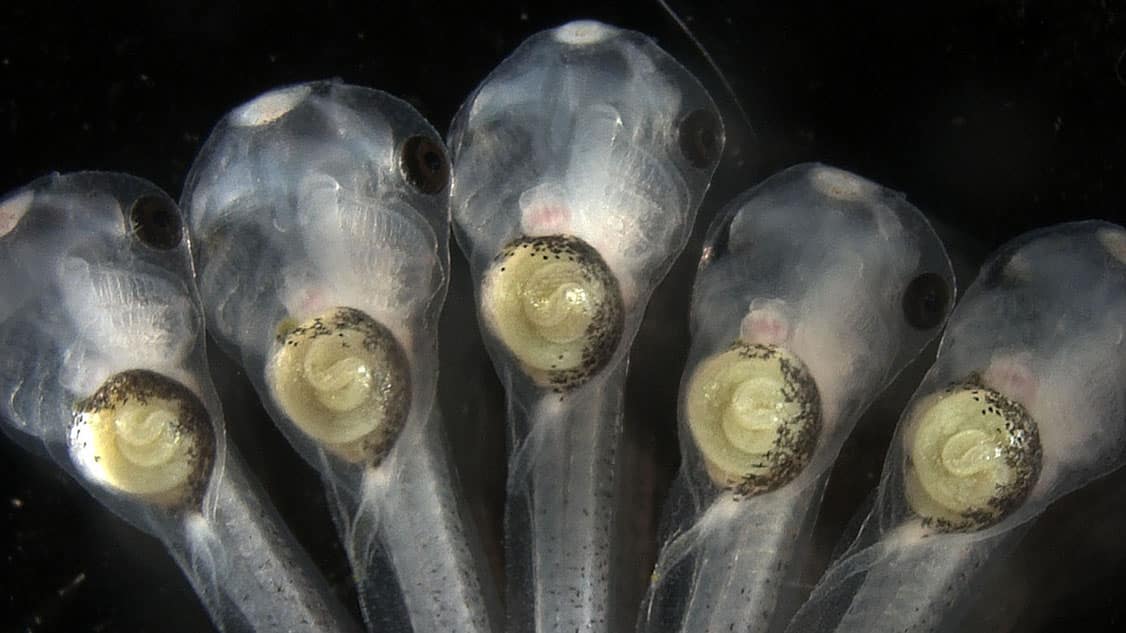What Frogs Can Tell Us About Our Intestines

Human beings have around 15 feet of intestine – which is amazing, considering most of us are under six feet tall. We can fit our intestines inside us because they loop and rotate during embryonic development. But for some people, that process goes wrong and we don’t know why.
Nanette Nascone-Yoder is a developmental biologist who studies frogs as a model of intestinal malrotation. She sat down with The Abstract to discuss her latest research, which appears in the journal Development.
The Abstract (TA): What do we mean when we talk about intestinal malrotation?
Nascone-Yoder: The growing intestine lengthens extensively during embryonic development, and must undergo a defined series of looping and rotation events to correctly package itself inside the abdomen. This is somewhat like properly winding a garden hose without creating kinks and knots. If the gut rotation process occurs incorrectly or incompletely, the loops of intestine settle in the wrong place, increasing the likelihood that they will become tangled and cause life-threatening complications.
TA: How common is intestinal malrotation in humans?
Nascone-Yoder: Intestinal malrotation is actually quite common – it affects as many as 1 in 500 births – but the underlying causes remain very poorly understood.
TA: You use frogs as a model for human intestinal development. Why frogs?
Nascone-Yoder: As vertebrates, frogs and humans share a common ancestor and have many comparable anatomical features, including an intestine that rotates in a similar manner. Because frog embryos develop in only a few days and are highly experimentally accessible, they allow us to quickly test new hypotheses about how and why development goes awry during malrotation.
TA: The study specifically looked at the effect of atrazine on intestinal development in frog embryos. Why atrazine?
Nascone-Yoder: Frog embryos develop in a petri dish and are transparent when the intestine is developing, so they can be exposed to drugs or environmental chemicals to screen for substances capable of producing malrotation. One of the compounds we screened was the herbicide atrazine. We found that exposure to atrazine greatly increased the frequency at which frog intestines rotated incorrectly so we decided to focus on atrazine-induced malrotation for further investigation.
Although we found that atrazine causes malrotation in frogs, these results do not necessarily mean that this herbicide causes malrotation in humans, because, in our screen, the tadpoles were exposed to 1,000-fold higher levels than are typically found in the environment. Nonetheless, our findings do suggest that disturbing the same cellular processes affected by atrazine, for example, via genetic mutations and/or exposure to other environmental chemicals, could contribute to intestinal malrotation in humans.
TA: What are the next steps in this work?
Nascone-Yoder: This study is just beginning to unravel what happens during gut development to cause intestinal malrotation, but our results provide new avenues to explore underlying causes. For example, we are now starting to dive deeper into the cellular events that work together to coordinate gut elongation with the process of rotation.
- Categories:


